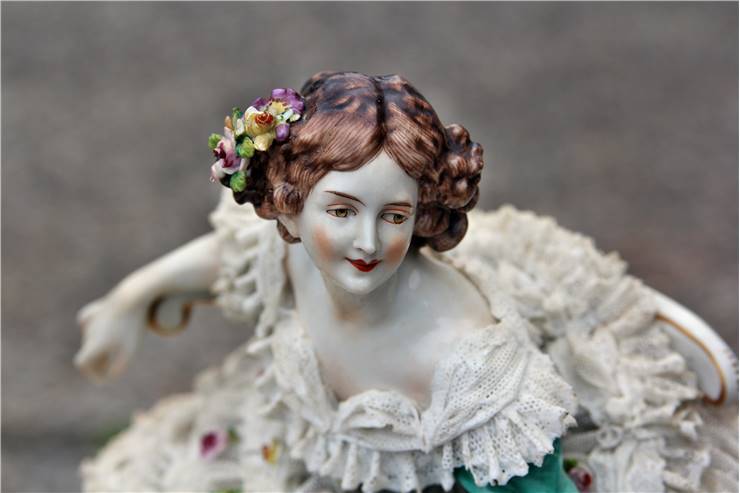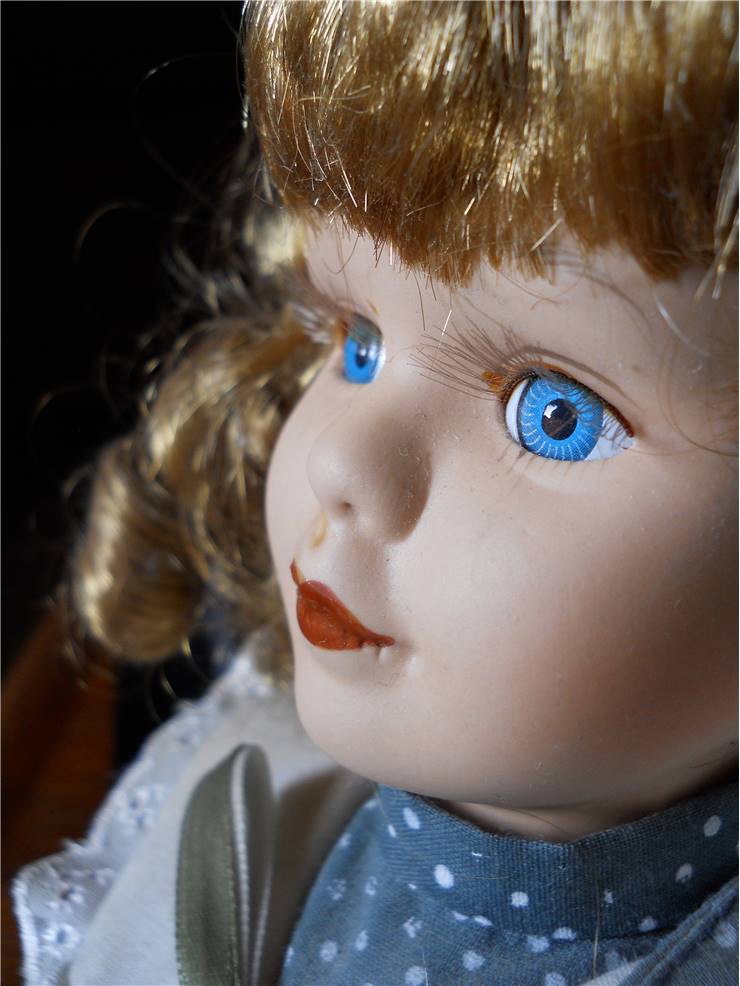Porcelain Doll Accessories - Cleaning and Repairing Porcelain Dolls
Porcelain bisque dolls reached their popularity because of their ability to closely emulate the look of human skin. Because of this and the initially very high price of manufacture, even the earliest models started incorporating the current fashion trends into their design. Since they were originally mostly offered to wealthier adult purchasers, lifelike bisque dolls were clothed in fashionable clothes that became more and more elaborate as decades went, and the facial and hair makeup that closely resembled the latest trends in the countries and times where those dolls were created. A large amount of antique German bisque dolls were sold naked, without any clothes. This was done so that parents could motivate their children to learn how to sow and quickly create different styles of clothing (since it was easier and more fun to create small clothing pieces for dolls than themselves). French dolls not only came with clothing and makeup already applied during manufacture and assembly, but their popularity also caused the emergence of the separate clothing and accessory production industry that catered to the doll collectors in late 19th century.
Since the most popular collector bisque dolls of the 19th century had adult look and proportions, their clothes were also adult-like. Those early models of higher-end bisque dolls (which were sometimes created in not only limited quantities but also ordered specifically to suit the needs of wealthy collectors) became an obsession of the new generations of collectors who became obsessed with not only the antique dolls dressed in elaborate clothes, but also simpler models that were mass produced by several manufacturers in both Europe and North America. French fully-clothed dolls were mass produced, and the creation of unique clothing pieces and full elaborate dresses was very popular. Wealthier owners even had enough funds to not only order their uniquely personalized sets of dolls (which are considered some of the most prized antique dolls today). The most expensive antique doll ever sold to date (valued at $300,000) was created under the orders of Parisian couturier Jeanne Margaine-LaCroix in 1916 who wanted to own 100 unique dolls that were designed by the famous French sculptor Albert Marque. Around the same time, bisque dolls were also used as fashion accessories of famous French actresses who dressed up dolls to closely resemble them.

How to Repair Porcelain Doll?
Years of use and decades of storage can eventually lead to the damaging of the dolls. Bisque dolls are very susceptible to damage since their base is created from the very fragile material, and their clothes and wigs are not made to be exceptionally durable. Hugs, playing, transport and storage and many other things can cause an incredible variety of bumps, bruises, broken or torn parts, chipping, tattering, molding of hair, missing parts, broken arms and much more. Take note that any sort of repair, or larger restorations can reduce the value of the dolls, which is the reason why so many owners strive to keep their dolls always as authentic as possible, especially their facial features and clothing. Depending on the needs and wishes of the owner, bisque dolls can be brought to better state either by themselves or by professional companies or technicians (repairs cost from below $100 to above $1000 depending on the condition of the doll and materials needed) who are well versed in the following techniques:
Repair – Most common set of procedures for fixing the lightly damaged dolls. It includes gluing of the broken parts, fixing the hair wig or mending the torn clothes or filling up the most visible skin artifacts.
Restoration – Returning the doll in the original condition, which includes the state of the body, clothes, facial features, wig and hair styling. Restoration of the materials can be done with original materials if they are available, or with new materials that closely mimic the look and feel of the original.
Conservation – Stabilizing of the look and state of the doll so that it can survive in an unchanged state for the prolonged time. Techniques for the preservation of the dolls stage include repairing of the little issues before they can grow into serious problems – filling up smaller skin cracks, keeping hair wig clean from early onsets of mold, treating an insect infestation, resetting loose eyes and more.
The problems that can afflict bisque dolls are very numerous, and they can cause dolls to have anything from the small problems that can be easily fixed by anyone to the extreme wear effect that can make them almost worthless. The most severe wear issues can be heavy cracking straight across the face, missing parts of the face porcelain, strong reactions of the porcelain surface to the heat, rotting or infestation of the internal stuffing of the doll, disintegrated wigs or clothing and more.
Here are some tips for home repair of certain damage types of bisque dolls:
Cleaning bisque porcelain – Renaissance Wax and Orvus soap can be used to clean and preserve the surface of the dolls.
Cleaning cloudy eyes – Many dolls have eyes made from glass that can become cloudy. That can be fixed with Renaissance Wax cleaning. Machine oil or nail polish should never be used!
Combing Hair – Older dolls can have very delicate wigs that loose hair easily. Use extreme care when combing dolls hair. Pin Combs or hat/tapestry pins can be used for (lengthy and hard) fixing some of the messiest and most fragile wigs.
Re-stringing – The basic body parts of most dolls (head, torso, and two legs and hands) are held with the internal strings. When stringing doll make sure that the parts are not held too strongly because that can damage the rotating joints.

Misshapen body – If the body of the doll is misshapen, that can actually be fixed. Treating the doll to the humidifier for at least two weeks, can make a doll bendable enough so that the body can be slowly reshaped.
Gluing – The best glue for sticking broken composition piece to the doll's body is PVA glue, which is PH-neutral, archival and fully reversible.
Creating molds – It’s possible to create new doll pieces with molds created from Cernit and modeled from Darwi.
Celluloid – This is one of the least durable materials often used for dolls. Keep doll out of the sunlight to protect it from celluloid rot.
Paper – White paper is used in accessorizing of some dolls. It can be cleaned with Knox pencil (a white vinyl eraser). Emergency repairs can be performed with Fimoplast. Additional compounds can be put over the paper to make it more durable.
Leather – Leather cloth of dolls can be cleaned and preserved by the “British Museum Leather Dressing” compound.
Painting – Painting of the dolls has to be done with water-based acrylic colors.
Ceramics - Ceramic parts must be cleaned with salts. Never use chlorine.

